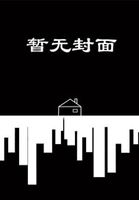Chapter1 Notre-Dame
The church of Notre-Dame de Paris is still no doubt, a majestic and sublime edifice. But, beautiful as it has been preserved in growing old, it is difficult not to sigh, not to wax indignant, before the numberless degradations and mutilations which time and men have both caused the venerable monument to suffer, without respect for Charlemagne, who laid its first stone, or for Philip Augustus, who laid the last.
On the face of this aged queen of our cathedrals, by the side of a wrinkle, one always finds a scar. Tempus edax, homo edacior; which I should be glad to translate thus:time is blind, man is stupid.
If we had leisure to examine with the reader, one by one, the diverse traces of destruction imprinted upon the old church, time's share would be the least, the share of men the most, especially the men of art, since there have been individuals who assumed the title of architects during the last two centuries.
And, in the first place, to cite only a few leading examples, there certainly are few finer architectural pages than this front, where, successively and at once, the three portals hollowed out in an arch; the broidered and dentated cordon of the eight and twenty royal niches; the immense central rose window, flanked by its two lateral windows, like a priest by his deacon and subdeacon; the frail and lofty gallery of trefoil arcades, which supports a heavy platform above its fine, slender columns; and lastly, the two black and massive towers with their slate penthouses, harmonious parts of a magnificent whole, superposed in five gigantic stories; —develop themselves before the eye, in a mass and without confusion, with their innumerable details of statuary, carving, and sculpture, joined powerfully to the tranquil grandeur of the whole; a vast symphony in stone, so to speak; the colossal work of one man and one people, all together one and complex, like the Iliads and the Romanceros, whose sister it is; prodigious product of the grouping together of all the forces of an epoch, where, upon each stone, one sees the fancy of the workman disciplined by the genius of the artist start forth in a hundred fashions; a sort of human creation, in a word, powerful and fecund as the divine creation of which it seems to have stolen the double character, —variety, eternity.
And what we here say of the front must be said of the entire church; and what we say of the cathedral church of Paris, must be said of all the churches of Christendom in the Middle Ages. All things are in place in that art, self-created, logical, and well proportioned.To measure the great toe of the foot is to measure the giant.
Let us return to the front of Notre-Dame, as it still appears to us, when we go piously to admire the grave and puissant cathedral, which inspires terror, so its chronicles assert:quae mole sua terrorem incutit spectantibus.
Three important things are to-day lacking in that front:in the first place, the staircase of eleven steps which formerly raised it above the soil; next, the lower series of statues which occupied the niches of the three portals; and lastly the upper series, of the twenty-eight most ancient kings of France, which garnished the gallery of the first story, beginning with Childebert, and ending with Phillip Augustus, holding in his hand“the imperial apple.”
Time has caused the staircase to disappear, by raising the soil of the city with a slow and irresistible progress; but, while thus causing the eleven steps which added to the majestic height of the edifice, to be devoured, one by one, by the rising tide of the pavements of Paris, —time has bestowed upon the church perhaps more than it has taken away, for it is time which has spread over the front that sombre hue of the centuries which makes the old age of monuments the period of their beauty.
But who has thrown down the two rows of statues?Who has left the niches empty?Who has cut, in the very middle of the central portal, that new and bastard arch?Who has dared to frame therein that commonplace and heavy door of carved wood the style of Louis XV., beside the arabesques of Biscornette?The men, the architects, the artists of our day.
And if we enter the interior of the edifice, who has overthrown that colossus of Saint Christopher, proverbial for magnitude among statues, as the grand hall of the Palais de Justice was among halls, as the spire of Strasbourg among spires?And those myriads of statues, which peopled all the spaces between the columns of the nave and the choir, kneeling, standing, equestrian, men, women, children, kings, bishops, gendarmes, in stone, in marble, in gold, in silver, in copper, in wax even, —who has brutally swept them away?It is not time.
And who substituted for the ancient gothic altar, splendidly encumbered with shrines and reliquaries, that heavy marble sarcophagus, with angels'heads and clouds, which seems a specimen pillaged from the Val-de-Grace or the Invalides?Who stupidly sealed that heavy anachronism of stone in the Carlovingian pavement of Hercandus?Was it not Louis XIV., fulfilling the request of Louis XIII.?
And who put the cold, white panes in the place of those windows, ”high in color, “which caused the astonished eyes of our fathers to hesitate between the rose of the grand portal and the arches of the apse?And what would a sub-chanter of the sixteenth century say, on beholding the beautiful yellow wash, with which our archiepiscopal vandals have desmeared their cathedral?He would remember that it was the color with which the hangman smeared“accursed”edifices; he would recall the H?tel du Petit-Bourbon, all smeared thus, on account of the constable's treason.“Yellow, after all, of so good a quality, ”said Sauval, “and so well recommended, that more than a century has not yet caused it to lose its color.”He would think that the sacred place had become infamous, and would flee.
And if we ascend the cathedral, without mentioning a thousand barbarisms of every sort, —what has become of that charming little bell tower, which rested upon the point of intersection of the cross-roofs, and which, no less frail and no less bold than its neighbor, the spire of the Sainte-Chapelle, buried itself in the sky, farther forward than the towers, slender, pointed, sonorous, carved in open work. An architect of good taste amputated it, and considered it sufficient to mask the wound with that large, leaden plaster, which resembles a pot cover.
'Tis thus that the marvellous art of the Middle Ages has been treated in nearly every country, especially in France. One can distinguish on its ruins three sorts of lesions, all three of which cut into it at different depths; first, time, which has insensibly notched its surface here and there, and gnawed it everywhere; next, political and religious revolution, which, blind and wrathful by nature, have flung themselves tumultuously upon it, torn its rich garment of carving and sculpture, burst its rose windows, broken its necklace of arabesques and tiny figures, torn out its statues, sometimes because of their mitres, sometimes because of their crowns; lastly, fashions, even more grotesque and foolish, which, since the anarchical and splendid deviations of the Renaissance, have followed each other in the necessary decadence of architecture.Fashions have wrought more harm than revolutions.They have cut to the quick; they have attacked the very bone and framework of art; they have cut, slashed, disorganized, killed the edifice, in form as in the symbol, in its consistency as well as in its beauty.And then they have made it over; a presumption of which neither time nor revolutions at least have been guilty.They have audaciously adjusted, in the name of“good taste, ”upon the wounds of gothic architecture, their miserable gewgaws of a day, their ribbons of marble, their pompons of metal, a veritable leprosy of egg-shaped ornaments, volutes, whorls, draperies, garlands, fringes, stone flames, bronze clouds, pudgy cupids, chubby-checked cherubim, which begin to devour the face of art in the oratory of Catherine de Medicis, and cause it to expire, two centuries later, tortured and grimacing, in the boudoir of the Dubarry.
Thus, to sum up the points which we have just indicated, three sorts of ravages to-day disfigure Gothic architecture. Wrinkles and warts on the epidermis; this is the work of time.Deeds of violence, brutalities, contusions, fractures; this is the work of the revolutions from Luther to Mirabeau.Mutilations, amputations, dislocation of the joints, “restorations”; this is the Greek, Roman, and barbarian work of professors according to Vitruvius and Vignole.This magnificent art produced by the Vandals has been slain by the academies.The centuries, the revolutions, which at least devastate with impartiality and grandeur, have been joined by a cloud of school architects, licensed, sworn, and bound by oath; defacing with the discernment and choice of bad taste, substituting the gingeread-work of Louis XV.For the Gothic lace, for the greater glory of the Parthenon.It is the kick of the ass at the dying lion.It is the old oak crowning itself, and which, to heap the measure full, is stung, bitten, and gnawed by caterpillars.
How far it is from the epoch when Robert Cenalis, comparing Notre-Dame de Paris to the famous temple of Diana at Ephesus, so much lauded by the ancient pagans, which Erostatus has immortalized, found the Gallic temple“more excellent in length, breadth, height, and structure.”
Notre-Dame is not, moreover, what can be called a complete, definite, classified monument. It is no longer a Romanesque church; nor is it a Gothic church.This edifice is not a type.Notre-Dame de Paris has not, like the Abbey of Tournus, the grave and massive frame, the large and round vault, the glacial bareness, the majestic simplicity of the edifices which have the rounded arch for their progenitor.It is not, like the Cathedral of Bourges, the magnificent, light, multiform, tufted, bristling efflorescent product of the pointed arch.Impossible to class it in that ancient family of sombre, mysterious churches, low and crushed as it were by the round arch, almost Egyptian, with the exception of the ceiling; all hieroglyphics, all sacerdotal, all symbolical, more loaded in their ornaments, with lozenges and zigzags, than with flowers, with flowers than with animals, with animals than with men; the work of the architect less than of the bishop; first transformation of art, all impressed with theocratic and military discipline, taking root in the Lower Empire, and stopping with the time of William the Conqueror.Impossible to place our Cathedral in that other family of lofty, aerial churches, rich in painted windows and sculpture; pointed in form, bold in attitude; communal and bourgeois as political symbols; free, capricious, lawless, as a work of art; second transformation of architecture, no longer hieroglyphic, immovable and sacerdotal, but artistic, progressive, and popular, which begins at the return from the crusades, and ends with Louis IX.Notre-Dame de Paris is not of pure Romanesque, like the first; nor of pure Arabian race, like the second.
It is an edifice of the transition period. The Saxon architect completed the erection of the first pillars of the nave, when the pointed arch, which dates from the Crusade, arrived and placed itself as a conqueror upon the large Romanesque capitals which should support only round arches.The pointed arch, mistress since that time, constructed the rest of the church.Nevertheless, timid and inexperienced at the start, it sweeps out, grows larger, restrains itself, and dares no longer dart upwards in spires and lancet windows, as it did later on, in so many marvellous cathedrals.One would say that it were conscious of the vicinity of the heavy Romanesque pillars.
However, these edifices of the transition from the Romanesque to the Gothic, are no less precious for study than the pure types. They express a shade of the art which would be lost without them.It is the graft of the pointed upon the round arch.
Notre-Dame de Paris is, in particular, a curious specimen of this variety.Each face, each stone of the venerable monument, is a page not only of the history of the country, but of the history of science and art as well.Thus, in order to indicate here only the principal details, while the little Red Door almost attains to the limits of the Gothic delicacy of the fifteenth century, the pillars of the nave, by their size and weight, go back to the Carlovingian Abbey of Saint-Germain des Prés.One would suppose that six centuries separated these pillars from that door.There is no one, not even the hermetics, who does not find in the symbols of the grand portal a satisfactory compendium of their science, of which the Church of Saint-Jacques de la Boucherie was so complete a hieroglyph.Thus, the Roman abbey, the philosophers'church, the Gothic art, Saxon art, the heavy, round pillar, which recalls Gregory VII., the hermetic symbolism, with which Nicolas Flamel played the prelude to Luther, papal unity, schism, Saint-Germain des Prés, Saint-Jacques de la Boucherie, —all are mingled, combined, amalgamated in Notre-Dame.This central mother church is, among the ancient churches of Paris, a sort of chimera; it has the head of one, the limbs of another, the haunches of another, something of all.
We repeat it, these hybrid constructions are not the least interesting for the artist, for the antiquarian, for the historian. They make one feel to what a degree architecture is a primitive thing, by demonstrating that the greatest products of architecture are less the works of individuals than of society; rather the offspring of a nation's effort, than the inspired flash of a man of genius; the deposit left by a whole people; the heaps accumulated by centuries; the residue of successive evaporations of human society, —in a word, species of formations.Each wave of time contributes its alluvium, each race deposits its layer on the monument, each individual brings his stone.Thus do the beavers, thus do the bees, thus do men.The great symbol of architecture, Babel, is a hive.
Great edifices, like great mountains, are the work of centuries.Art often undergoes a transformation while they are pending, pendent opera interrupta; they proceed quietly in accordance with the transformed art.The new art takes the monument where it finds it, incrusts itself there, assimilates it to itself, develops it according to its fancy, and finishes it if it can.The thing is accomplished without trouble, without effort, without reaction, —following a natural and tranquil law.It is a graft which shoots up, a sap which circulates, a vegetation which starts forth anew.Certainly there is matter here for many large volumes, and often the universal history of humanity in the successive engrafting of many arts at many levels, upon the same monument.The man, the artist, the individual, is effaced in these great masses, which lack the name of their author; human intelligence is there summed up and totalized.Time is the architect, the nation is the builder.
Not to consider here anything except the Christian architecture of Europe, that younger sister of the great masonries of the Orient, it appears to the eyes as an immense formation divided into three well-defined zones, which are superposed, the one upon the other:the Romanesque zone, the Gothic zone, the zone of the Renaissance, which we would gladly call the Greco-Roman zone. The Roman layer, which is the most ancient and deepest, is occupied by the round arch, which reappears, supported by the Greek column, in the modern and upper layer of the Renaissance.The pointed arch is found between the two.The edifices which belong exclusively to any one of these three layers are perfectly distinct, uniform, and complete.There is the Abbey of Jumièges, there is the Cathedral of Reims, there is the Sainte-Croix of Orleans.But the three zones mingle and amalgamate along the edges, like the colors in the solar spectrum.Hence, complex monuments, edifices of gradation and transition.One is Roman at the base, Gothic in the middle, Greco-Roman at the top.It is because it was six hundred years in building.This variety is rare.The donjon keep of d'Etampes is a specimen of it.But monuments of two formations are more frequent.There is Notre-Dame de Paris, a pointed-arch edifice, which is imbedded by its pillars in that Roman zone, in which are plunged the portal of Saint-Denis, and the nave of Saint-Germain des Prés.There is the charming, half-Gothic chapter—house of Bocherville, where the Roman layer extends half way up.There is the cathedral of Rouen, which would be entirely Gothic if it did not bathe the tip of its central spire in the zone of the Renaissance.
Facies non omnibus una,
No diversa tamen, qualem, etc.
Their faces not all alike, nor yet different, but such as the faces of sisters ought to be.
However, all these shades, all these differences, do not affect the surfaces of edifices only. It is art which has changed its skin.The very constitution of the Christian church is not attacked by it.There is always the same internal woodwork, the same logical arrangement of parts.Whatever may be the carved and embroidered envelope of a cathedral, one always finds beneath it—in the state of a germ, and of a rudiment at the least—the Roman basilica.It is eternally developed upon the soil according to the same law.There are, invariably, two naves, which intersect in a cross, and whose upper portion, rounded into an apse, forms the choir; there are always the side aisles, for interior processions, for chapels, —a sort of lateral walks or promenades where the principal nave discharges itself through the spaces between the pillars.That settled, the number of chapels, doors, bell towers, and pinnacles are modified to infinity, according to the fancy of the century, the people, and art.The service of religion once assured and provided for, architecture does what she pleases.Statues, stained glass, rose windows, arabesques, denticulations, capitals, bas-reliefs, —she combines all these imaginings according to the arrangement which best suits her.Hence, the prodigious exterior variety of these edifices, at whose foundation dwells so much order and unity.The trunk of a tree is immovable; the foliage is capricious.
Chapter2 A Bird's-Eye View of Paris
We have just attempted to restore, for the reader's benefit, that admirable church of Notre-Dame de Paris. We have briefly pointed out the greater part of the beauties which it possessed in the fifteenth century, and which it lacks to-day; but we have omitted the principal thing, —the view of Paris which was then to be obtained from the summits of its towers.
That was, in fact, —when, after having long groped one's way up the dark spiral which perpendicularly pierces the thick wall of the belfries, one emerged, at last abruptly, upon one of the lofty platforms inundated with light and air, —that was, in fact, a fine picture which spread out, on all sides at once, before the eye; a spectacle sui generis, of which those of our readers who have had the good fortune to see a Gothic city entire, complete, homogeneous, —a few of which still remain, Nuremberg in Bavaria and Vittoria in Spain, —can readily form an idea; or even smaller specimens, provided that they are well preserved, —Vitré in Brittany, Nordhausen in Prussia.
The Paris of three hundred and fifty years ago—the Paris of the fifteenth century—was already a gigantic city. We Parisians generally make a mistake as to the ground which we think that we have gained, since Paris has not increased much over one-third since the time of Louis XI.It has certainly lost more in beauty than it has gained in size.
Paris had its birth, as the reader knows, in that old island of the City which has the form of a cradle. The strand of that island was its first boundary wall, the Seine its first moat.Paris remained for many centuries in its island state, with two bridges, one on the north, the other on the south; and two bridge heads, which were at the same time its gates and its fortresses, —the Grand-Chatelet on the right bank, the Petit-Chatelet on the left.Then, from the date of the kings of the first race, Paris, being too cribbed and confined in its island, and unable to return thither, crossed the water.Then, beyond the Grand, beyond the Petit-Chatelet, a first circle of walls and towers began to infringe upon the country on the two sides of the Seine.Some vestiges of this ancient enclosure still remained in the last century; to-day, only the memory of it is left, and here and there a tradition, the Baudets or Baudoyer gate, “Porte Bagauda”.
Little by little, the tide of houses, always thrust from the heart of the city outwards, overflows, devours, wears away, and effaces this wall.Philip Augustus makes a new dike for it.He imprisons Paris in a circular chain of great towers, both lofty and solid. For the period of more than a century, the houses press upon each other, accumulate, and raise their level in this basin, like water in a reservoir.They begin to deepen; they pile story upon story; they mount upon each other; they gush forth at the top, like all laterally compressed growth, and there is a rivalry as to which shall thrust its head above its neighbors, for the sake of getting a little air.The street glows narrower and deeper, every space is overwhelmed and disappears.The houses finally leap the wall of Philip Augustus, and scatter joyfully over the plain, without order, and all askew, like runaways.There they plant themselves squarely, cut themselves gardens from the fields, and take their ease.Beginning with 1367, the city spreads to such an extent into the suburbs, that a new wall becomes necessary, particularly on the right bank; Charles V.builds it.But a city like Paris is perpetually growing.It is only such cities that become capitals.They are funnels, into which all the geographical, political, moral, and intellectual water-sheds of a country, all the natural slopes of a people, pour; wells of civilization, so to speak, and also sewers, where commerce, industry, intelligence, population, —all that is sap, all that is life, all that is the soul of a nation, filters and amasses unceasingly, drop by drop, century by century.
So Charles V.'s wall suffered the fate of that of Philip Augustus.At the end of the fifteenth century, the Faubourg strides across it, passes beyond it, and runs farther.In the sixteenth, it seems to retreat visibly, and to bury itself deeper and deeper in the old city, so thick had the new city already become outside of it.Thus, beginning with the fifteenth century, where our story finds us, Paris had already outgrown the three concentric circles of walls which, from the time of Julian the Apostate, existed, so to speak, in germ in the Grand-Chatelet and the Petit-Chatelet.The mighty city had cracked, in succession, its four enclosures of walls, like a child grown too large for his garments of last year.Under Louis XI., this sea of houses was seen to be pierced at intervals by several groups of ruined towers, from the ancient wall, like the summits of hills in an inundation, —like archipelagos of the old Paris submerged beneath the new.Since that time Paris has undergone yet another transformation, unfortunately for our eyes; but it has passed only one more wall, that of Louis XV., that miserable wall of mud and spittle, worthy of the king who built it, worthy of the poet who sung it, —
Le mur murant Paris rend Paris murmurant.















